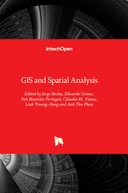Explore

GIS and Spatial Analysis
0 Ungluers have
Faved this Work
Login to Fave
The objective of spatial analysis techniques is to describe the patterns existing in spatial data and to establish, preferably quantitatively, the relationships between different geographic variables. The notion of spatial analysis in a Geographic Information Systems (GIS) environment encompasses the idea of integrating spatial data and alphanumeric attributes and translating it into a series of functions related to selection and data search, on the one hand, and with modeling, on the other. There have been substantial advances in spatial analysis techniques in GIS, mainly in the form of more faithfully apprehending the relationships inherent to the geographic phenomenon, something that was proven impossible to do with non-spatial techniques. Nowadays, spatial analysis involves a set of techniques used to analyze and model variables with distribution in space and/or time. The new era of spatial analysis must also consider the possibilities of integrating artificial intelligence in simulation (geosimulation) processes in computerized environments (geocomputation) in close relationship with models developed in real situations. GIS have emerged as useful tools in geographic modeling processes, helping to answer questions about the time variability of the landscape structure, study the behavior of fire, predict areas of urban expansion, analyze propagation phenomena, model animal movement and behavior, and determine periods and areas of high risk of flooding, among other phenomena. GIS and Spatial Analysis is a critical book that provides different methodologies that combine the potential data (including Big Data) analysis with GIS applications. It gives readers a comprehensive overview of the current state-of-the-art methods of spatial analysis, focusing both on the new philosophical and theoretical foundations for spatial analysis and on a flexible framework for analysis in the real world, for problems such as complexity and uncertainty.
This book is included in DOAB.
Why read this book? Have your say.
You must be logged in to comment.
Rights Information
Are you the author or publisher of this work? If so, you can claim it as yours by registering as an Unglue.it rights holder.Downloads
This work has been downloaded 98 times via unglue.it ebook links.
- 52 - pdf (CC BY) at Unglue.it.
- 46 - pdf (CC BY) at mts.intechopen.com.
Keywords
- Database
- Electric vehicles
- Geography
- LiDAR
- Machine learning
- magnetic anisotropy
Links
DOI: 10.5772/intechopen.100705Editions

